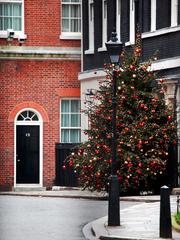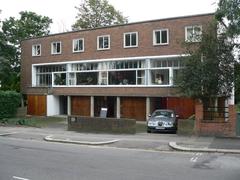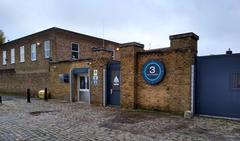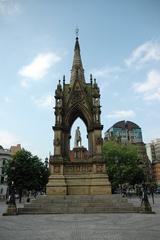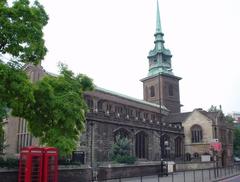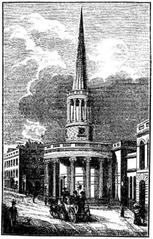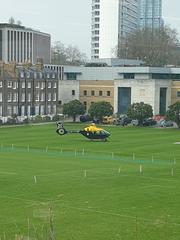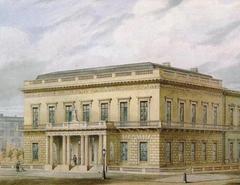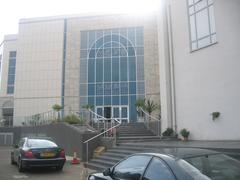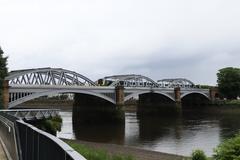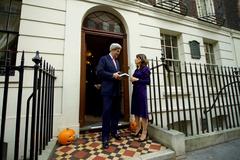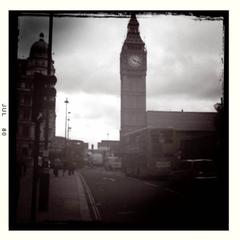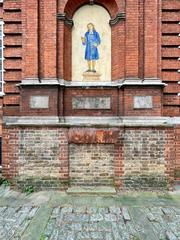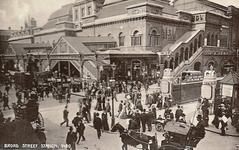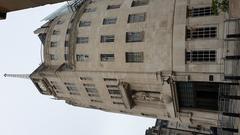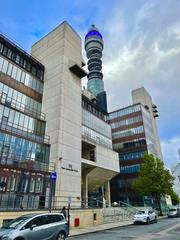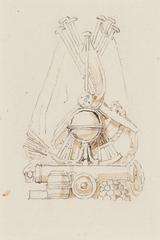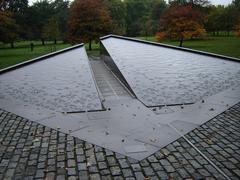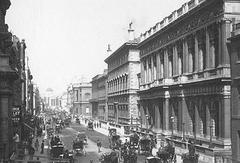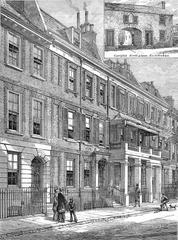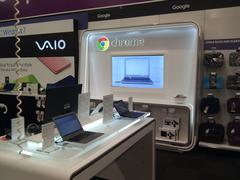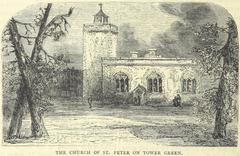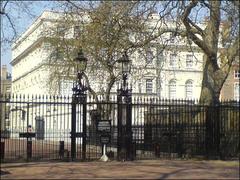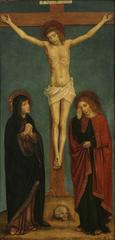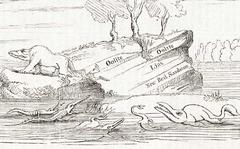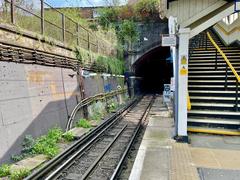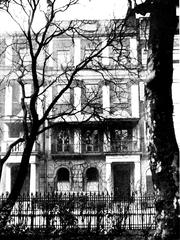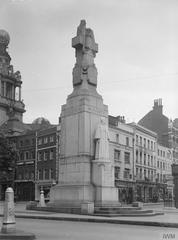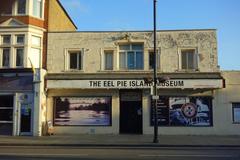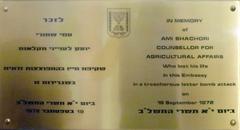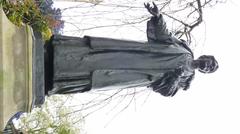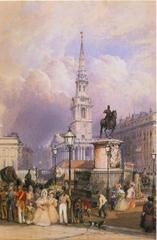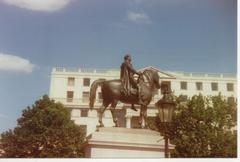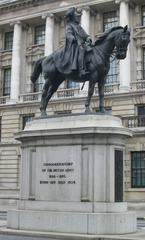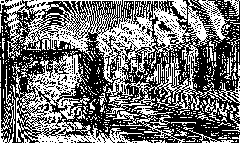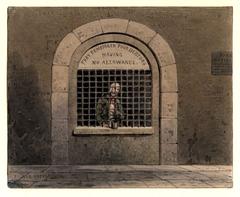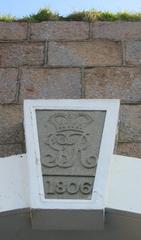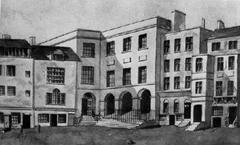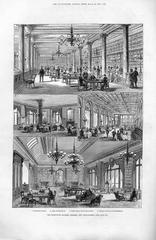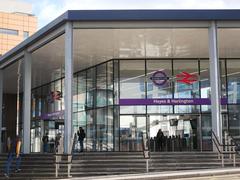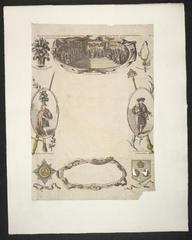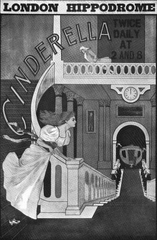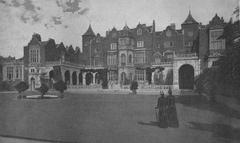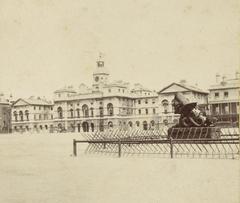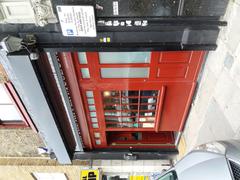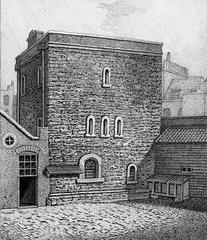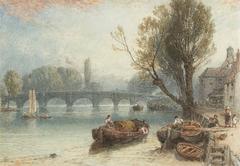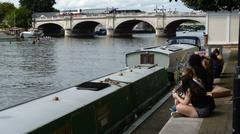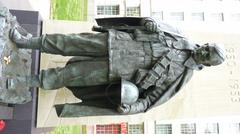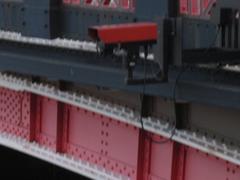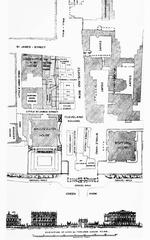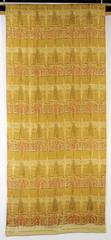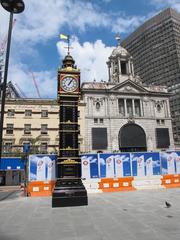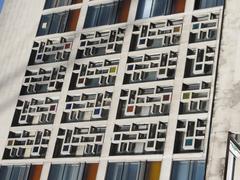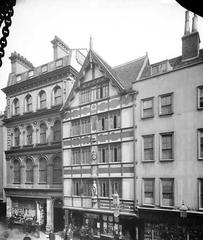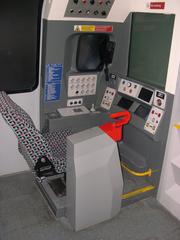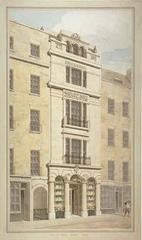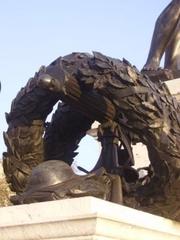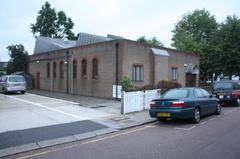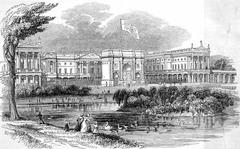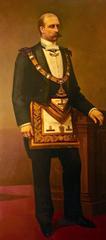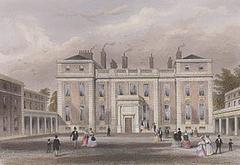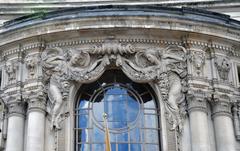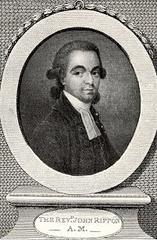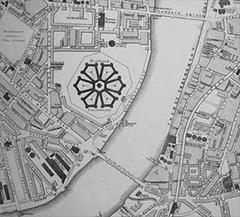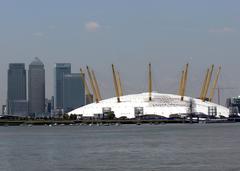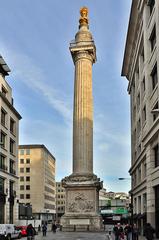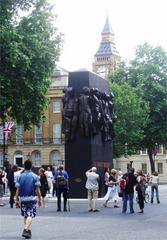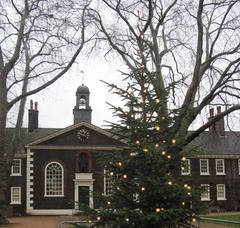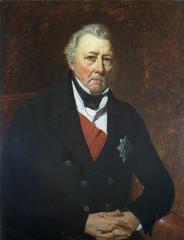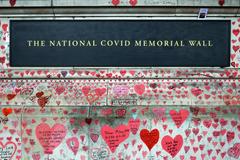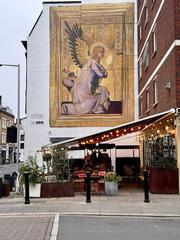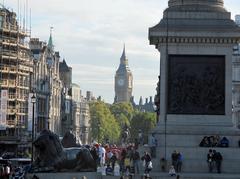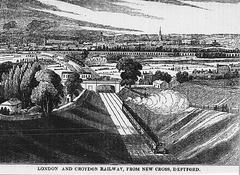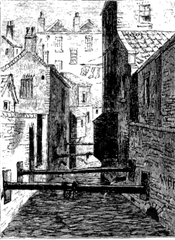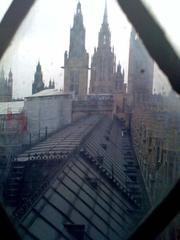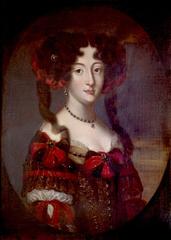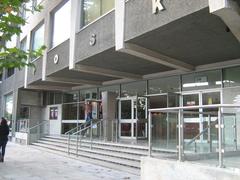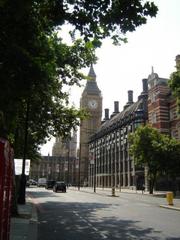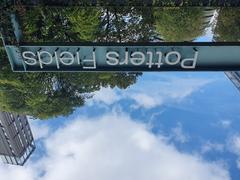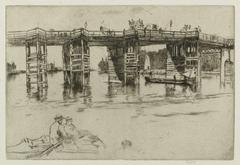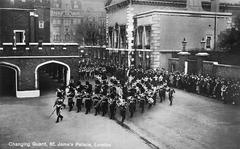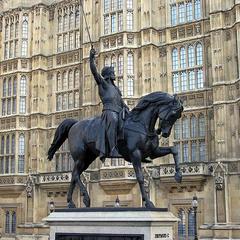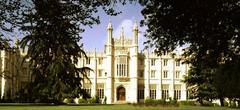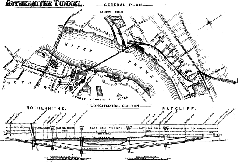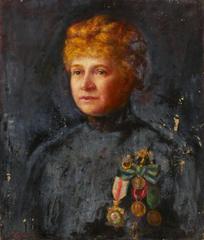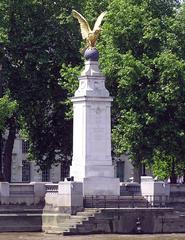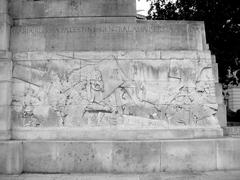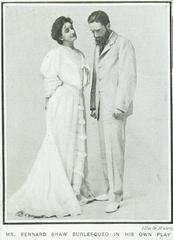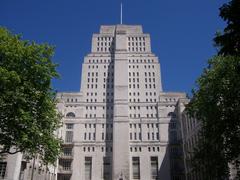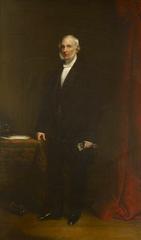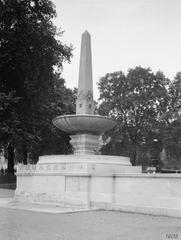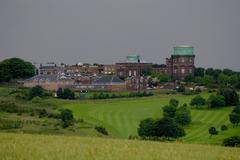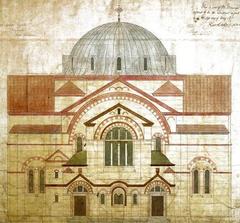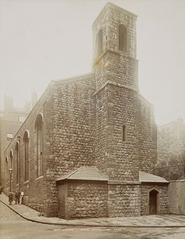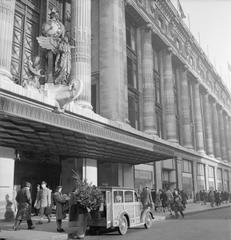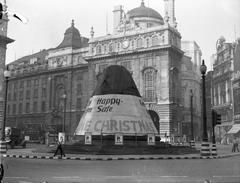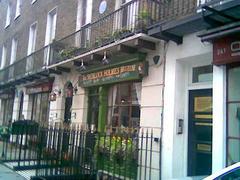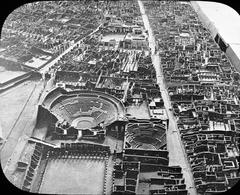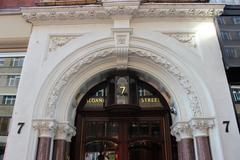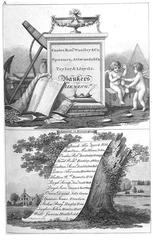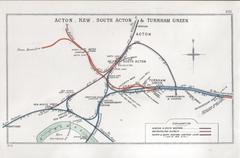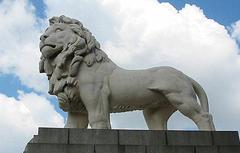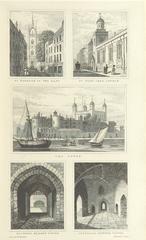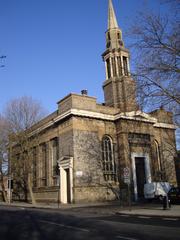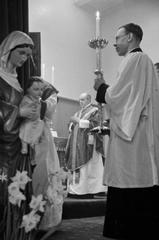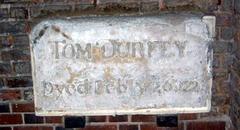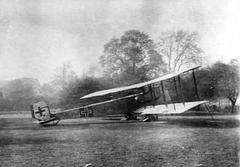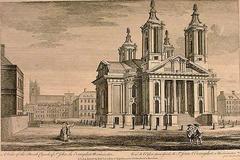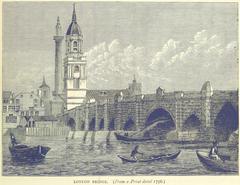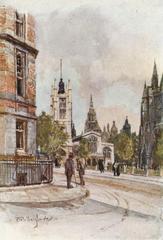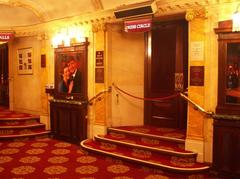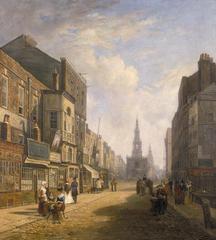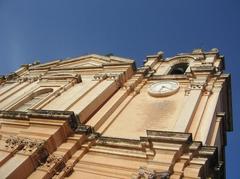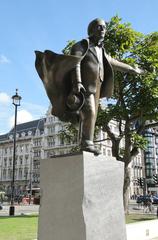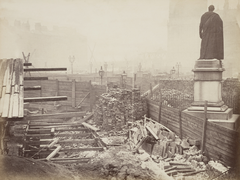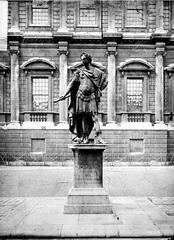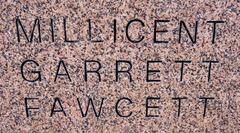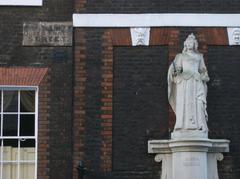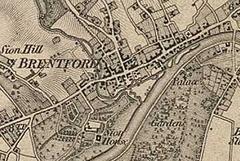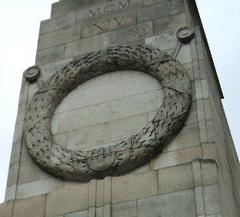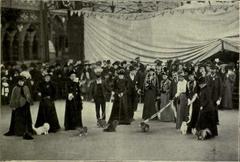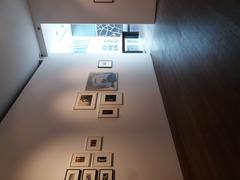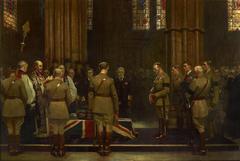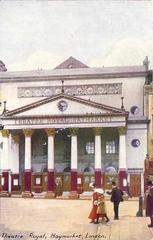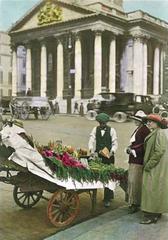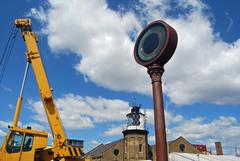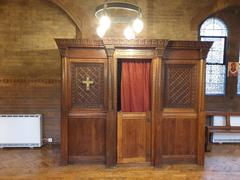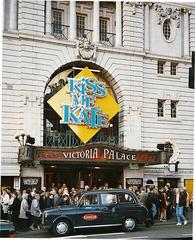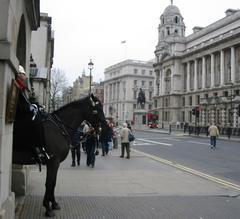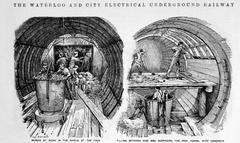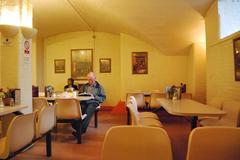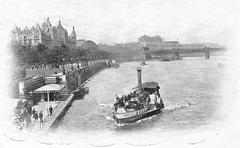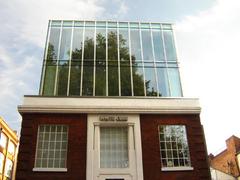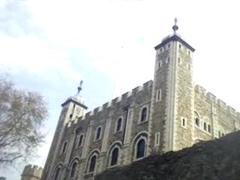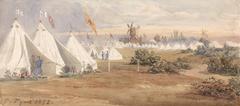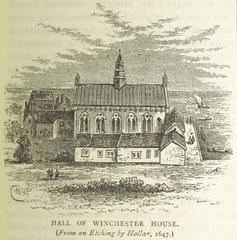Painted Hall Visiting Guide in London: Hours, Tickets, History, and Travel Tips
Date: 18/08/2024
Introduction
The Painted Hall at the Old Royal Naval College in Greenwich, London, is often lauded as “Britain’s Sistine Chapel,” a testament to the grandeur and artistic brilliance of Baroque art. Originally conceived in the late 17th century by Queen Mary II, the hall was designed by Sir Christopher Wren and adorned with murals by Sir James Thornhill. Thornhill’s work, which took 19 years to complete, transformed a simple dining room into a majestic space celebrating British naval power, political change, and cultural achievements (lookup.london). This comprehensive guide provides an in-depth look at the Painted Hall’s rich history, artistic significance, and practical information for visitors, ensuring a memorable experience at one of London’s most stunning historical sites.
Table of Contents
- Introduction
- History of the Painted Hall
- Evolution of the Painted Hall’s Function
- Restoration and Modern-Day Significance
- Visitor Experience
- Practical Information for Visitors
- Special Events and Photographic Spots
- FAQ
- Conclusion
History of the Painted Hall
Origins and Conception
The Painted Hall was initially conceived by Queen Mary II in the late 17th century as part of a broader initiative to establish a hospital for retired and sickly naval officers, akin to the Royal Chelsea Hospital for soldiers (lookup.london). The architectural design was entrusted to Sir Christopher Wren, who envisioned a grand dining hall with a plain, light-filled interior.
Artistic Transformation
The transformation of the Painted Hall from a simple dining space to a Baroque masterpiece began in 1707 when British artist Sir James Thornhill was commissioned to decorate the hall with murals. Thornhill, relatively unknown at the time, embarked on an ambitious project that would take 19 years to complete, finishing in 1726 (visitgreenwich.org.uk). His work earned him a knighthood and a payment of £6,685, a significant sum for the period.
Artistic Techniques and Themes
Thornhill employed various artistic techniques to bring the hall to life, including trompe l’oeil (trick the eye) and chiaroscuro (contrast of light and dark), inspired by Italian Baroque painting (ornc.org). The ceiling and walls are adorned with over 200 figures, including kings, queens, and mythological creatures, celebrating British naval power, political change, and cultural achievements. Central figures in the fresco include King William III and Queen Mary II, depicted in a grand apotheosis, symbolizing their ascension to power and the prosperity that followed (fullsuitcase.com).
Evolution of the Painted Hall’s Function
Ceremonial Dining Room and Visitor Attraction
Originally intended as a dining room for naval pensioners, the Painted Hall quickly became a ceremonial space open to paying visitors and reserved for special functions. Its grandeur and artistic significance made it a popular attraction (ornc.org).
Nelson’s Lying-in-State
One of the most significant events in the hall’s history was the lying-in-state of Lord Nelson in January 1806. The event drew large crowds to view the hero’s body, and the exact spot where the coffin lay is marked by a plaque on the floor (visitgreenwich.org.uk).
National Gallery of Naval Art
From 1824 to 1924, the Painted Hall served as the first National Gallery of Naval Art, housing over 300 paintings by renowned artists such as J.M.W. Turner and Sir Joshua Reynolds. During this period, Thornhill’s murals took a secondary role to the gallery’s collection (ornc.org).
College Dining Hall
In 1869, after the last Greenwich Pensioners left the site, the hall became part of the Royal Naval College. From 1937 to 1997, it functioned as a dining space for trainee officers of the Royal Navy (visitgreenwich.org.uk).
Restoration and Modern-Day Significance
Restoration Efforts
The most recent chapter in the Painted Hall’s history is its extensive restoration. Closed for restoration in 2016, the project cost over £8.5 million and aimed to clean and conserve the 17th-century paintings. The restoration lifted nearly 300 years of grime, cigar smoke, and previous poor preservation techniques, revealing the vibrant colors and intricate details of Thornhill’s work (lonelyplanet.com).
Reopening and Current Use
The Painted Hall reopened to the public in 2019, offering visitors a chance to experience its restored splendor. The hall is now a major tourist attraction, often featured on social media platforms like Instagram and TikTok for its breathtaking beauty (secretldn.com). It hosts various events and exhibitions, including temporary installations like Paul Cocksedge’s ‘Coalescence,’ which featured over 2,500 pieces of sparkling coal suspended in the Upper Hall (secretldn.com).
Visitor Experience
Accessibility
Access to the Painted Hall is through the King William Undercroft, which has been renovated to include visitor facilities, a shop, a cafe, and a gallery. A lift in the undercroft now allows wheelchair access to the Painted Hall for the first time (slowtravelnews.com).
Guided Tours
A ticket to the Painted Hall includes a multimedia guide available in seven languages and several optional guided tours. These tours cover the 600-year history of the Old Royal Naval College, the Painted Hall, and its use as a blockbuster film location. The guided tours are highly informative and help bring the hall’s fascinating history and artwork to life (fullsuitcase.com).
Family Activities
For families, the Painted Hall offers new family-friendly trails with sensory backpacks. Children can enjoy interactive items connected to the ceiling, including costumes like a crown, a cloak, and a replica of King William’s Red Cap of Liberty (slowtravelnews.com).
Practical Information for Visitors
Visiting Hours and Tickets
The Painted Hall is open daily from 10:00 AM to 5:00 PM, with the last entry at 4:30 PM. Tickets can be purchased online or on-site. Adult tickets are priced at £12, while children under 16 enter for free. Discounts are available for seniors, students, and groups. For the latest information on visiting hours and ticket prices, visit the official website (ornc.org).
Travel Tips
The Painted Hall is located within the Old Royal Naval College in Greenwich, easily accessible by public transport. The nearest stations are Cutty Sark (DLR) and Greenwich (train and DLR). There are also several bus routes that stop nearby. For those driving, limited on-site parking is available.
Nearby Attractions
While visiting the Painted Hall, consider exploring other historical sites in Greenwich, such as the Royal Observatory, the Cutty Sark, and the National Maritime Museum. The area is also home to beautiful parks and riverside walks, making it an ideal day out.
Special Events and Photographic Spots
The Painted Hall frequently hosts special events, including evening tours, live performances, and art installations. It’s also a popular spot for photography, with its stunning Baroque interiors providing a perfect backdrop. Check the official website for upcoming events and best photography tips.
FAQ
- What are the Painted Hall’s visiting hours? The Painted Hall is open daily from 10:00 AM to 5:00 PM.
- How much do tickets to the Painted Hall cost? Adult tickets are £12, and children under 16 enter for free.
- Is the Painted Hall wheelchair accessible? Yes, there is a lift in the King William Undercroft that allows wheelchair access to the Painted Hall.
- Are guided tours available? Yes, there are multimedia guides and optional guided tours available.
- What nearby attractions can I visit? Nearby attractions include the Royal Observatory, Cutty Sark, and the National Maritime Museum.
Conclusion
The Painted Hall at the Old Royal Naval College is a testament to the grandeur and artistic excellence of Baroque art. Its rich history, from its conception as a dining hall for naval pensioners to its current status as a major tourist attraction, makes it a must-visit destination in London. The hall’s recent restoration has ensured that future generations can continue to marvel at Sir James Thornhill’s masterpiece, celebrating British naval power, political change, and cultural achievements.
Call to Action
Plan your visit to the Painted Hall today by checking the latest visiting hours and ticket prices on the official website. Follow us on social media for updates and share your Painted Hall experience using the hashtag #PaintedHallGreenwich.
References
- lookup.london. (n.d.). The Painted Hall. https://lookup.london/painted-hall/
- visitgreenwich.org.uk. (n.d.). The Painted Hall. https://www.visitgreenwich.org.uk/things-to-do/the-painted-hall-p1761921
- ornc.org. (n.d.). The Painted Hall Through Time. https://ornc.org/our-history/royal-hospital/the-painted-hall-through-time/
- fullsuitcase.com. (n.d.). Painted Hall, Old Royal Naval College. https://fullsuitcase.com/painted-hall-old-royal-naval-college/
- lonelyplanet.com. (n.d.). Painted Hall. https://www.lonelyplanet.com/england/london/greenwich-and-south-london/attractions/painted-hall/a/poi-sig/1278075/1319408
- secretldn.com. (n.d.). The Painted Hall Greenwich. https://secretldn.com/the-painted-hall-greenwich/
- slowtravelnews.com. (2024, June 12). Guide to the Old Royal Naval College and Painted Hall, London. https://slowtravelnews.com/2024/06/12/guide-to-the-old-royal-naval-college-and-painted-hall-london/
- Wikipedia. (n.d.). Old Royal Naval College. https://en.wikipedia.org/wiki/Old_Royal_Naval_College
- Greenwich Historical Society. (2020, May). The Painted Hall: Sir James Thornhill’s Masterpiece at Greenwich. https://www.ghsoc.co.uk/2020/05/the-painted-hall-sir-james-thornhills-masterpiece-at-greenwich/
- Audiala. (n.d.). Painted Hall. https://audiala.com/en/united-kingdom/london/painted-hall

